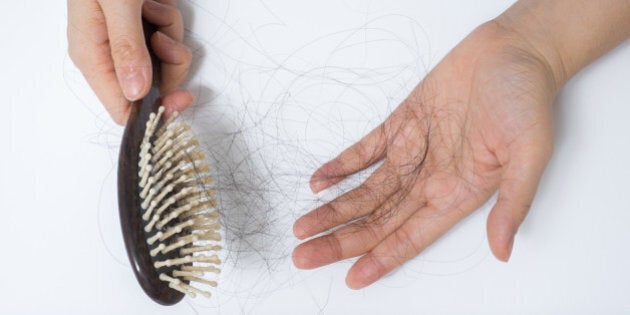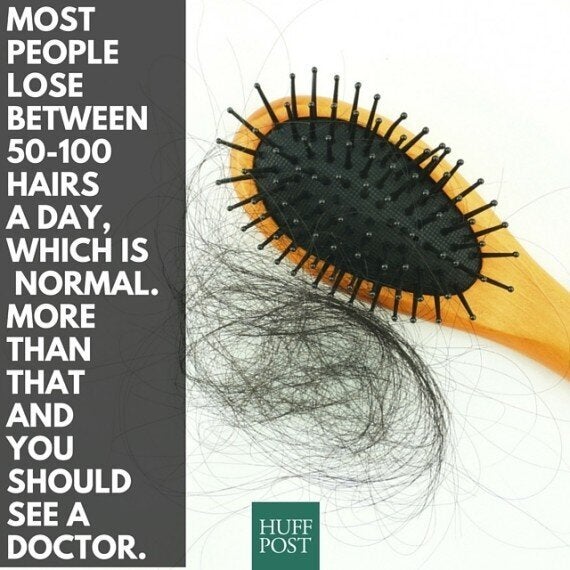
It's fair to blame both Disney and Hollywood for giving us females unrealistic goals when it comes to hair. Let's face it, half the actors in Hollywood have extensions and all those Disney princesses are just drawings.
The truth is that most of us have a head of hair far from what you'd call lush, and the reality only gets sadder as we age. One in three women will notice hair thinning or hair loss after age 30, and it can start as early as the 20s.
Most people lose between 50-100 hairs a day, which is considered 'normal'. People who consistently experience loss or shedding of 150 or more hairs a day may be experiencing significant loss, which in women is known as female pattern hair loss.
"The condition of female pattern hair loss is a genetic hereditary condition," dermatologist Dr Eleni Yiasemides told The Huffington Post Australia.
"The condition can be inherited from either the mother or father's side. Females with this condition have normal hormone levels and are otherwise well. FPHL is extremely common."
The (sort-of) good news is that the hair loss doesn't follow the same pattern as it does in men, so you won't look like George Costanza anytime soon.
"The hair loss occurs as both increased shedding of hair and miniaturisation of the hair (smaller diameter of the hair strand). Female pattern hair loss occurs in a pattern -- it starts in the centre of the crown with widening of the part. There is never complete baldness such as the smooth shiny scalp with no hair as seen in male pattern baldness, and there is no recession of the hairline," Yiasemides said.

So, if hereditary hair loss accounts for 90 percent of all hair loss or hair thinning in women, what causes the other 10 percent?
"Temporary hair loss, medically known as Acute Telogen Effluvium, is the temporary increased shedding of hair. It lasts three to six months. You may see more hair on your hairbrush, pillows, and in the shower drain. It occurs as a result of hormonal changes such as stopping the oral contraceptive pill, just after giving birth, after severe stress or medical illness such as thyroid disease, iron deficiency or zinc deficiency. The hair will grow back without any specific treatment," Yiasemides said.
Well that's good news for the minority, but what can be done for those with female pattern hair loss?
"In FPHL there are no lifestyle measures that can change the course of the disease. Early treatment leads to the best long term results. Hair shampoos, styling, colouring hair and the like also make no difference."
"Treatment includes topical minoxidil. Most dermatologists recommend 5 percent concentration applied daily (for example, women’s Regaine foam). This needs to applied lifelong or the hair loss will continue," Yiasemides said.

"There are also tablets that a dermatologist can prescribe for FPHL. They all have anti-male hormone effects, though they may have potential unwanted side effects. Tablets include the combined oral contraceptive pills (including oestrogen plus either cyproterone acetate or drosperinone), spironolactone, finasteride."
As always, have a chat with your doctor.
